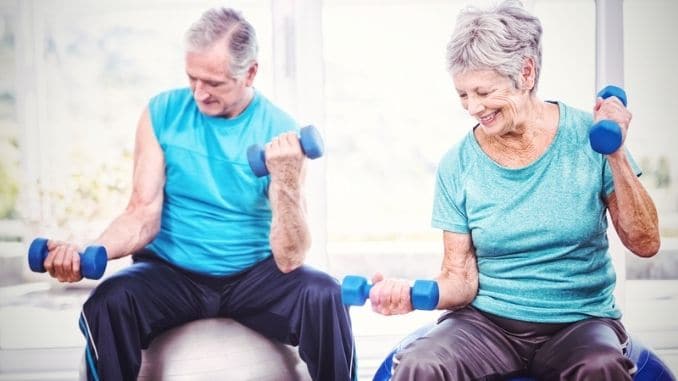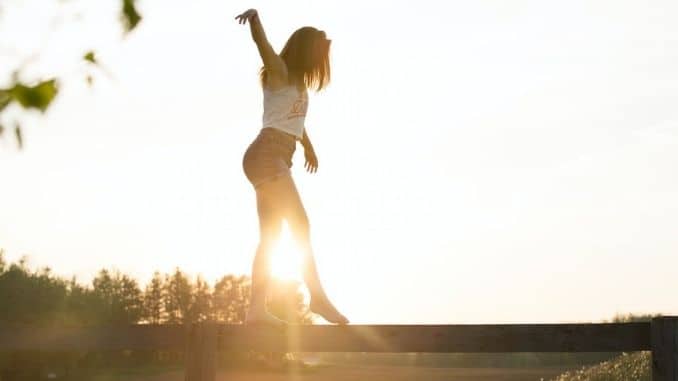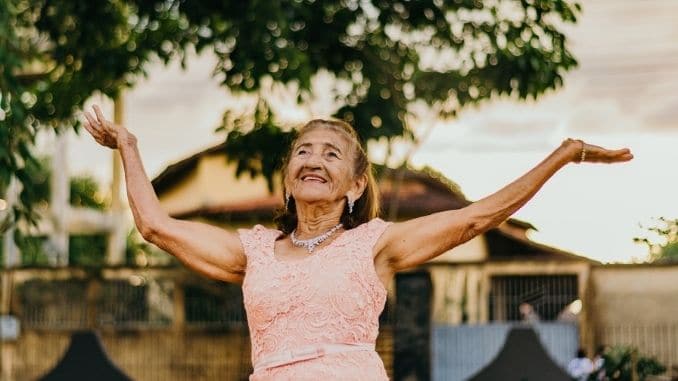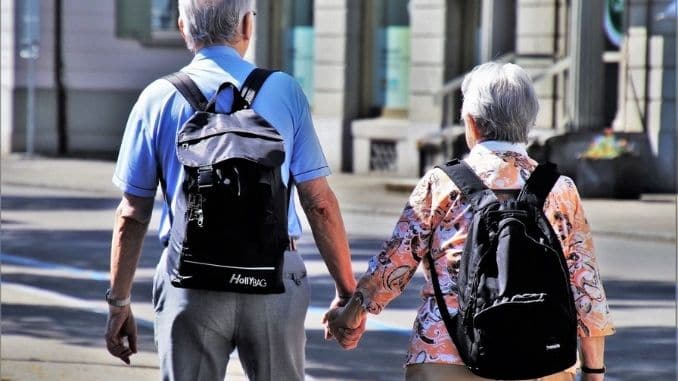
Have you ever played a game of Jenga? If so, you know the art of balance. Perhaps you’ve practiced making your movements as smooth as possible to avoid toppling over that stack of blocks.
When it comes to our daily lives, however, we rarely think about balance until something bad happens. One day you might get up from your chair and find the room spinning around you, for example, or walk up the stairs and suddenly have to stop for fear you might fall.
Balance disorders are among the most common reasons people age 65 and older see their doctors. According to a 2015 study, dizziness and imbalance are a “growing health concern since they put older people at a significantly higher risk of falling.”
Falls, unfortunately, can be deadly. The University of Rochester Medical Center reports that elderly patients are three times as likely to die following a ground-level fall compared to their younger counterparts.
If you or a loved one is experiencing balance problems, it’s important to check with a doctor to see what might be causing them. There are also a number of exercises you can do that help improve balance and strength so that you’re more likely to stay upright.
What Are Balance Disorders?
Most of the time, we’re able to control our posture and maintain our sense of balance no matter what we’re doing. All of us have suffered the occasional trip and fall, but usually, it’s caused by an unexpected obstacle, such as a stray wire or curled rug. On the whole, we manage to stay on our feet pretty easily.
That’s because many different parts of the body work together to keep us that way. The eyes detect the terrain and nerve cells in the inner ear signal which way is up and down. Nerves in the skin, muscles and limbs also supply the signals needed to maintain proper posture throughout the day.
Balance disorders occur when that sense of balance is disturbed for some reason, and suddenly you find it more difficult to stay upright. Symptoms may include:
- Dizziness and lightheadedness
- A sense of vertigo like spinning
- Feeling like you’re floating
- Loss of balance or unsteadiness; feeling like you’re going to fall
- Vision changes like blurriness
- Tripping or staggering
- Confusion or disorientation
What Causes Balance Disorders?
Balance disorders may occur because of other health problems, like the following, or they may exist on their own:
- Ear infection
- Allergies causing sinus buildup
- Stroke
- Migraine headache
- Multiple sclerosis
- Medications
- Cardiovascular disease
- High blood pressure
- Dehydration
In addition to the conditions above, the following are the most common causes of balance issues in seniors.
Benign Paroxysmal Positional Vertigo
Benign paroxysmal positional vertigo (BPPV) occurs because of an inner ear disturbance. You feel like you’re spinning or like the inside of your head is spinning. The symptoms are usually triggered by changes in the position of your head, such as when you tip your head up or down, or when you sit up in bed. Often there is no known cause, but it can be related to a blow to the head or damage to the inner ear.
Meniere’s Disease
This is a disorder of the inner ear that causes vertigo and hearing loss. It usually affects only one ear and may result in ringing and a feeling of fullness in the ear. The cause is unknown, but it’s usually connected to a buildup of fluid in the inner ear.
Labyrinthitis
This is an inner ear problem created by an infection that inflames the nerves connecting the inner ear to the brain. Symptoms include vertigo, dizziness and balance problems as well as hearing and vision problems.
Ramsay Hunt Syndrome
This disorder occurs when a shingles outbreak affects the facial nerve near one of the ears. It can cause hearing loss in that ear, facial paralysis, ringing in the ears and a sensation or moving or spinning.
Muscle Weakness
We naturally lose muscle mass as we age, which can lead to muscle weakness. Add to that unstable joints, and it becomes more difficult to maintain balance.
You may notice that a lot of these disorders affect the inner ear. That’s because the inner ear is critical to your ability to maintain your balance. The vestibular system, which is your organ of balance, is found inside the inner ear. It contains three loops called semicircular canals that all contribute to your sense of where you are in the world:
- One canal senses up-and-down movement
- Another canal senses side-to-side movement
- The third canal senses tilting movements
Each of these canals has tiny hair-like sensors and fluid inside that sense when you move, then send messages to your brain through the acoustic nerve. Your brain uses that information to help maintain your posture.
Treatment for balance disorders caused by most of these issues will focus on treating the issue itself. Keeping high blood pressure under control, treating ear infections with antibiotics or going through therapy for stroke can all help individuals regain a sense of balance.
How to Tell if You’re Having Balance Problems
How can you tell if you may be having balance problems?
Try this test ― stand with your arms at your sides and lift one foot up behind you about 6 inches off the floor. Count to 30 and watch yourself. If you start to wobble or have to reach for a nearby object to stabilize yourself, you may need to pay attention to your balance.
There are other things to consider. Ask yourself the following questions:
- Is your balance worse at night or in dark rooms?
- How many times have you fallen in the past year?
- Do you often experience dizziness or lightheadedness?
- Have you found yourself feeling confused or disoriented?
- Have you noticed any bothersome changes in either of your ears?
If you answered “yes” to any of these questions, it may be wise to check with your doctor.
Exercises to Help Restore Strength and Balance
Although all of the above conditions can affect balance, the most common issue as people age is muscle weakness. At the end of the day, no matter what else may be going on, if your muscles are strong enough to hold you up, you’re unlikely to fall. The minute they become too weak to do that, however, you become vulnerable and may be unable to recover your balance when you trip or mistakenly run into something.
It’s common as we age to lose strength and muscle mass. This occurs for a number of reasons, including reduced activity, an unbalanced diet and inflammation. Scientists are also discovering other changes that take place as we age that lead to decreased muscle quantity and quality, including an ineffective response to tissue damage and decreases in protein synthesis rate.
Fortunately, you don’t have to accept this change. Regularly challenging your muscles and practicing balancing techniques like those listed below can help you maintain your balance as you age.

5 Balancing Exercises
Sometimes, our bodies forget how to balance. You can retrain your mind and muscles by performing these exercises regularly.
1. One-leg Stand
Stand straight with your hands at your sides. Raise one leg in front of you, bending the knee to 45 degrees. Hold for 5 to 10 seconds and repeat. Perform 10 times on both legs. You can also perform a variation of this exercise known as the “flamingo stand” where you lift the leg behind you rather than in front of you.
2. Heel-to-Toe Walking
Walk as if you’re balancing on a balance beam, with the heel of the front foot touching the toe of the back foot as you take 10 steps forward. Turn around and take 10 steps back.
3. Stand From a Chair
Sit down in a firm chair, then stand back up without using your arms or hands for assistance.
4. Sidestepping
Shuffle across the room by stepping to the right, then bringing your left foot across to meet your right foot. When you reach the other side of the room, shuffle back.
5. Cross-Step or Grapevine
Start by standing at one side of the room. Sidestep your right foot out, then take another step, but cross your left foot behind your right. Step your right foot out again and then take another step but, this time, cross your left foot in front of the right. Continue to alternate as you make your way across the room.
5 Strengthening Exercises
The following exercises also focus on balance, but they add more challenge to your muscles, which can help you build strength as well.
1. Back Leg Raises
Stand behind a chair and hold onto the back of it. Lift your right leg straight behind you, trying not to bend your knees. Hold the leg up as high as you can for 10 seconds, then lower back down and repeat on the other side. Perform a total of 15 repetitions on each side.
2. Side Leg Raises
This exercise is similar to the first one. You stand behind a chair again but, this time, lift your leg straight out to the side. This helps strengthen your leg and hip muscles. Hold it there for 10 to 20 seconds, and then lower down and repeat on the other side. Alternate five times or more on each side.
3. Squat to a Chair
This exercise helps build up your thigh and buttock muscles. Stand in front of a regular firm chair with your legs hip-width apart. Raise your chest slightly, then lower your hips back and down while bending at the knees. Hover above the chair for five seconds or so, then pushing through your heels, stand back up. Be sure to avoid extending your knees beyond your toes.
4. Heel Raises
This exercise is great for strengthening the ankle and knee joints, which are important to balance. Stand with feet hip-width apart. Lift both heels off the floor slowly so that you’re balancing on the balls of your feet. Hold for a few seconds, then lower down gently and slowly. Repeat at least 10 times.
5. Bird Dog
This exercise strengthens your core, which is also important for balance. Start down on your hands and knees. Use a mat beneath your knees if needed. Then, raise your right arm straight out slowly in front of you and hold it. Once you’ve stabilized yourself, raise your left leg out behind you at the same time. Hold both aloft for 10 seconds, and then switch sides.
.







